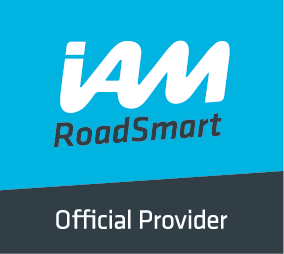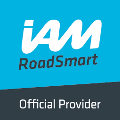Read our useful driving tips provided by Mark Farnworth, Group Vice-President or from other Group members or IAM RoadSmart where stated.
Browse by topic (click to view and then press back arrow)
ABS, Books, 'Automatic' Gearboxes, Dual carriageways, Country driving, Eco driving, Green traffic lights, Handbrake, Horses, Indicating, Motorway driving, Observation, Overtaking, Roundabouts, Signalling, Spoken thought, System of Car Control, Terminology, Town Driving, Traffic lights, Vehicle balance
Driving tips at glance
Driving tips at a glance
- When driving down a hill use the same gear as you would use when driving up the same hill. 'Pulling power' up a hill can be seen as the opposite of 'engine braking' down a hill.
- If you see SLOW written on the road before a bend then it is likely that you will need 3rd gear for the bend.
- If you see chevrons on a bend then it is likely that you will need second gear for the bend.
- When approaching 'green' traffic lights in 4th gear, change to third gear before the lights and drive through them in 3rd gear (assuming you are going straight ahead). A reduction in speed may be required before the gear change (e.g. if you are on a dual carriageway).
- On approach to a roundabout when a lower gear is required, only change gear when it is possible to get on to the roundabout, ' if it's clear - change the gear'.
- Ignore a headlamp flash to indicate right of way. Judge right of way by road markings and the position and/or movement of vehicles.
- Give right of way to other vehicles only by the speed and position of your vehicle (no 'flashing', no hand waving).
- Remember to use the handbrake before selecting the reverse gear.
- When stopping behind stationary traffic in front, leave sufficient space so that the bottom of the rear tyres of the vehicle in front are easily visible.
- When moving from a speed restricted to a speed de-restricted area, only start to increase speed when the sign has been reached.
- If the vehicle in front is turning left then 'hold back', allowing it to make its turn. Continue forward in a straight line when the road ahead is clear. Do not steer around a left turning vehicle.
15 tips to become an EcoSafe driver
- Make sure you fully tighten your fuel cap – fuel evaporation costs money.
- Find a competitive fuel price in a forecourt – avoid motorway service stations.
- Plan your journeys – can you do one trip rather than three?
- Avoid areas of congestion – check traffic news before you start your journey.
- Avoid being tired when driving. Tiredness kills! It also causes erratic driving/heavy braking which cost money.
- Get rid of excess weight – roof rack, clutter on back seats and in boot.
- Switch off air conditioning at low speeds – open windows for ventilation.
- Ensure tyres are correctly inflated – saves wear and money.
- Keep engine clean – where possible use energy conserving oils and fuels.
- Use accelerator and brakes smoothly.
- Try and keep moving. An engine has to work hard to move a stationary vehicle.
- Avoid excessive revving when starting the engine and moving off.
- Don’t exceed speed limits. The higher the speed the higher the fuel consumption.
- Use engine braking when possible e.g. when going downhill.
- Where possible, use the highest possible gear without making the engine struggle.
By Mark Farnworth
Disclaimer: Driving is never a black and white activity, but full of grey areas, therefore neither I nor my fellow Observers in the St Helens & District Group of Advanced Motorists are liable for any consequences you may experience as a result of reading our advice. You are the driver. You should be in control of your vehicle at all times.

